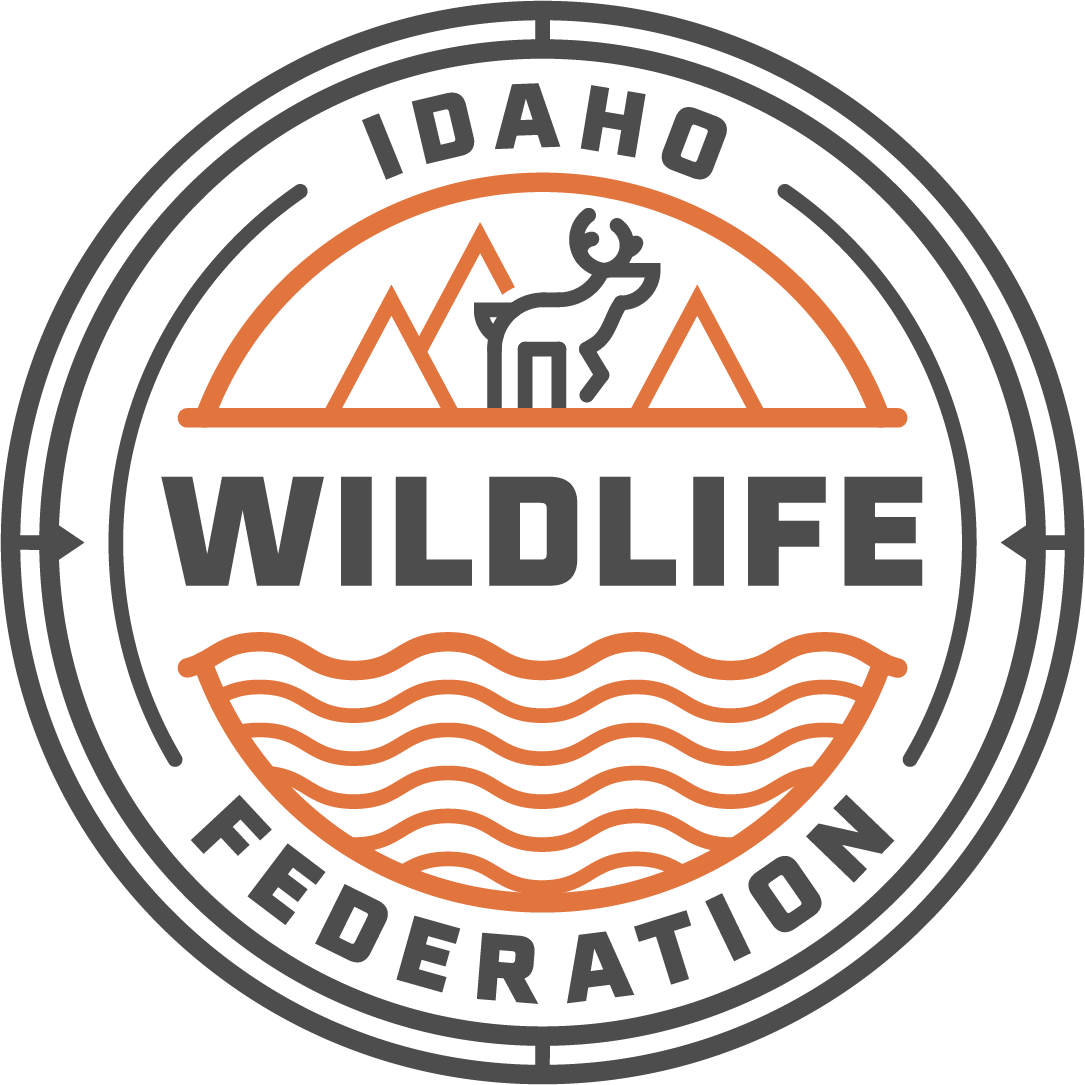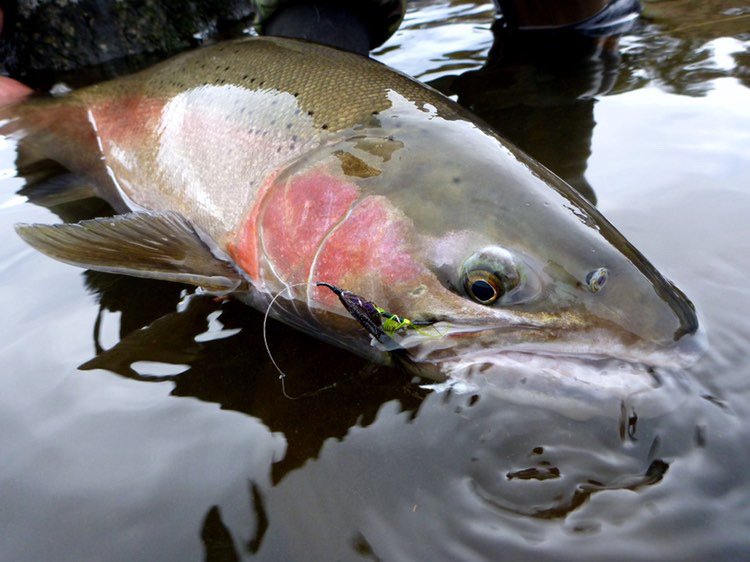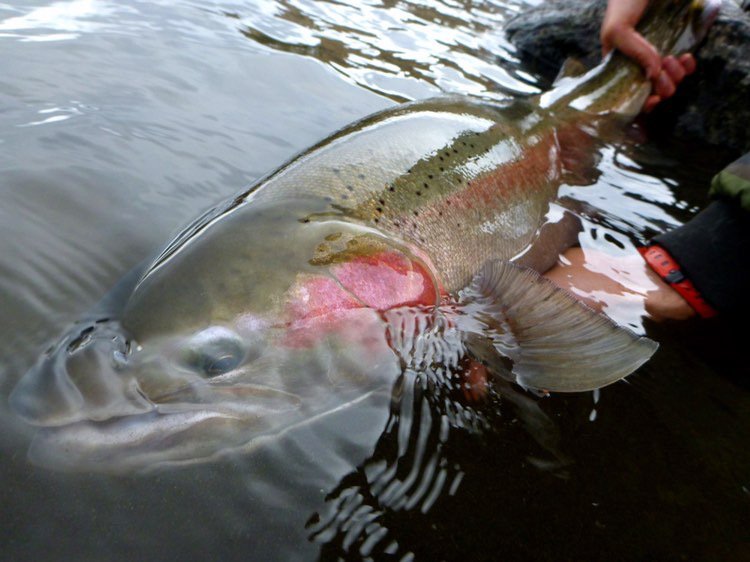Species Series: B-Run Steelhead
This is the first of a five parts series celebrating Idaho’s famed B-run steelhead. It will include installments on their history, status and threats as well as profiles of local fisherman whose lives depend on and have been changed by them forever.
B-Run steelhead. Photo: Mark Martin/Idaho Outfitters and Guides Association
Colorado may have prolific elk numbers, Montana and Wyoming may have significant upland bird populations and the southwest states have mega-muleys. There is no doubt Idaho is world-renowned for a number of fish and wildlife pursuit opportunities, but there may be one that - pun intended - rises above the rest.
Pound for pound, Idaho’s B-run steelhead give any native fish or game species a run for their money.
All Pacific Salmon and steelhead have - for good reason, as we’ll learn more about - remarkable and overwhelmingly complex life histories, migrations and behaviors. B-run steelhead may be the true icons of Idaho.
They are the epitome of perseverance and of the grit required for a life evolutionarily tuned to the northern Rockies. They have changed the lives of our neighbors, friends and family in the Snake River basin and its Idaho tributaries - the Clearwater and Salmon, since time millenia, and we hope in perpetuity.
There’s no way around it, these special fish - our unique fish - deserve special attention and recognition.
Let’s dig in.
What’s a B-run steelhead?
Wild B-run steelhead are the largest of Idaho steelhead – mostly six to sixteen pounds, though some giants exceed 25 pounds by spending two or more years in the ocean.
Simply put, the Snake River’s summer steelhead are generally grouped into two distinct sub-populations/stocks, known as “A-runs” and “B-runs.” Managers distinguish these two sub-populations according to size and return timing at Bonneville Dam, the lowermost dam in the Columbia River.
Yes, there are general differences in size and run timing of A- and B-run steelhead. Firstly, B-runs head to the ocean later than their A-run brethren and then - a majority of the time - stay out two years at sea, which is why B-runs tend to be larger in size.
B-run fish also tend to pass Bonneville Dam later than A-runs. Like age and size however, there is overlap and significant variation between A- and B-run stocks. Studies highlight the overlap among them by age, size, and run timing at Bonneville Dam. This underscores the remarkable diversity in steelhead, and suggests that steelhead life histories occur along a continuum rather than in discrete groupings.
B-run steelhead. Photo: Mark Martin/Idaho Outfitters and Guides Association.
WHERE ARE B-RUN STEELHEAD?
B-run steelhead inhabit the Clearwater, the Middle and South Forks of the Salmon, and tributaries to the Main Salmon between those forks. They only exist in the Snake Basin! After returning from the ocean, B-run adults enter the Columbia and Snake Rivers in late summer and early fall after other Idaho salmon and steelhead. After migrating 400 miles - most of it now dammed - many then over-winter at low elevations in the lower Clearwater and Salmon before climbing the next spring to their headwater spawning areas.
This capacity to pace their migration confers flexibility for responding to varying river conditions across all four seasons. Pre-dams, this strategy provided a survival edge that compounded over time into remarkable productivity. Post-dams, it has helped them hold on during the last half-century despite losing half their spawning habitat to Dworshak Dam on the North Fork Clearwater, and the degradation of their native range in the Columbia and lower Snake River.
Pre-Dworshak dam, the North Fork Clearwater River was the most productive drainage of larger, older steelhead in the Columbia River basin. The Dworshak Hatchery stock continues to be known for its big fish, but studies are showing a trend toward both younger and smaller fish returning. Many other wild steelhead areas in the Clearwater and Salmon River basins continue to produce larger, older fish. These systems tend to be steep terrain and be cooler in temperature year-round like the Lochsa, Selway, South Fork Clearwater, South Fork Salmon, and Middle Fork Salmon rivers. Because of the colder, less productive environment, these fish grow slower and are generally older (up to 5 years old) when they go to the ocean as smolts compared to many steelhead populations in the Columbia River basin. Idaho’s B-run fish stay in the ocean longer, so 2 and 3-ocean fish are more common than in other populations. Their larger size is advantageous when returning back to these remote, rugged systems and is likely the reason they evolved to be bigger.
Idaho B-run steelhead. Photo: Mark Martin, Idaho Outfitters and Guides Association.
HISTORICAL ABUNDANCE
In 2017-2018, fewer than 400 wild fish returned to the Clearwater and its undammed tributaries, a decline from the early 1960s of 99.9%. Before the construction of four dams on the lower Snake River (1962 - 1975) and Dworshak Dam (1972) on the Clearwater’s North Fork, the Idaho Department of Fish and Game (IDFG) estimates that approximately 40,000 wild B-run steelhead returned to their natal streams in the Clearwater Basin. In 1962, nearly 43,200 wild B-run steelhead were counted as they crossed a smaller dam (long gone) just three miles upstream from the river’s confluence with the Snake River in Lewiston.
The Snake River Basin steelhead Distinct Population Segments - which includes the B-run stocks of Snake, Clearwater and Salmon Rivers and respective tributaries - was originally listed under the Endangered Species Act in 1997.B-run steelhead are Idaho by their nature.
To get update on this series, and to get all the latest news regarding idaho’s salmon and steelhead, sign up to join our Salmon and Steelhead Newsletter using the form below.
Sources:
Idaho Fish and Game : Wild Salmon and Steelhead
Idaho Fish and Game: Wild Fish Are Important
Idaho FIsh and Game: Wild Salmon and Steelhead
Idaho Statesman: B Run Steelhead Look Good On Idaho’s Salmon River This Year
Save Our Wild Salmon: B Run Steelhead
Wild Steelheaders United: What Is A B Run Steelhead
Life History Diversity of Snake River Steelhead Populations between and within Management Categories
2022 5-Year Review: Summary & Evaluation of Snake River Basin Steelhead
Idaho B-run steelhead. Photo: Mark Martin, Idaho Outfitters and Guides Association.





